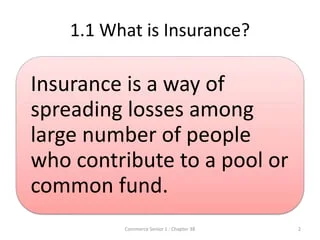Some Ideas on Pacific Prime You Need To Know
Some Ideas on Pacific Prime You Need To Know
Blog Article
Getting My Pacific Prime To Work
Table of ContentsPacific Prime Things To Know Before You BuyNot known Facts About Pacific PrimeSome Of Pacific PrimeThe Definitive Guide for Pacific PrimeSome Of Pacific Prime

This is because the data were collected for a duration of solid economic performance. Of the approximated 42 million people that were uninsured, just about about 420,000 (regarding 1 percent) were under 65 years old, the age at which most Americans end up being qualified for Medicare; 32 million were adults in between ages 18 and 65, around 19 percent of all adults in this age group; and 10 million were youngsters under 18 years of age, concerning 13.9 percent of all youngsters (Mills, 2000).
These estimates of the number of individuals uninsured are produced from the yearly March Supplement to the Existing Population Survey (CPS), performed by the Demographics Bureau. Unless otherwise noted, nationwide estimates of people without health and wellness insurance policy and proportions of the populace with various sort of protection are based upon the CPS, one of the most widely utilized source of price quotes of insurance policy protection and uninsurance prices.
The Greatest Guide To Pacific Prime

Still, the CPS is especially helpful because it produces yearly price quotes reasonably rapidly, reporting the previous year's insurance protection estimates each September, and since it is the basis for a constant set of estimates for greater than twenty years, enabling evaluation of fads in insurance coverage gradually. For these reasons, as well as the substantial use the CPS in various other studies of insurance protection that are presented in this report, we count on CPS price quotes, with restrictions kept in mind.

The price quote of the number of without insurance individuals broadens when a population's insurance policy condition is tracked for several years. Over a three-year period starting early in 1993, 72 million people, 29 percent of the united state population, were without coverage for at the very least one month. Within a single year (1994 ), 53 million people experienced a minimum of a month without coverage (Bennefield, 1998a)
6 out of every ten uninsured grownups are themselves employed. Although working does enhance the probability that and one's family members will certainly have insurance policy, it is not an assurance. Even participants of families with 2 full-time breadwinner have almost a one-in-ten possibility of being uninsured (9.1 percent uninsured price) (Hoffman and Pohl, 2000).
The Best Guide To Pacific Prime
New immigrants account for a significant proportion of people without medical insurance. One analysis has associated a substantial part of the recent growth in the size of the U.S. uninsured population to immigrants who showed up in the nation in between 1994 and 1998 (Camarota and Edwards, 2000). Current immigrants (those who involved the USA within the past four years) do have a high rate of being without insurance (46 percent), yet they and their children represent just 6 percent of those without insurance coverage across the country (Holahan et al., 2001).
The relationship between medical insurance and accessibility to care is well established, as documented later in this chapter. Although the connection between wellness insurance and health outcomes is neither direct neither basic, an extensive medical and health and wellness services research literary works web links wellness insurance policy coverage to enhanced access to care, better quality, and boosted individual and populace health status.
Degrees of analysis for analyzing the results of uninsurance. This conversation of health insurance policy protection focuses largely on the united state population under age 65 because practically all Americans 65 and older have Medicare or other public coverage. Additionally, it concentrates specifically on those with no health insurance coverage for any type of size of time.
The Best Strategy To Use For Pacific Prime
The problems encountered by the underinsured are in some aspects similar to those encountered by the without insurance, although they are normally less severe. Wellness insurance, nonetheless, is neither needed nor sufficient to obtain accessibility to medical solutions. The independent and direct effect of health and wellness insurance policy protection on accessibility to wellness solutions is well developed.
Others will certainly get the health and wellness treatment they need also without medical insurance, by spending for it out of pocket or seeking it from service providers that click here for more supply treatment cost-free or at highly subsidized prices. For still others, wellness insurance policy alone does not make certain invoice of care because of various other nonfinancial barriers, such as an absence of healthcare carriers in their neighborhood, minimal access to transport, illiteracy, or linguistic and cultural differences.
How Pacific Prime can Save You Time, Stress, and Money.
Official research regarding without insurance populaces in the United States dates to the late 1920s and early 1930s when the Committee on the Price of Healthcare generated a collection of records concerning funding medical professional office sees and hospital stays. This issue became significant as the varieties of clinically indigent climbed up throughout the Great Depression.
Report this page